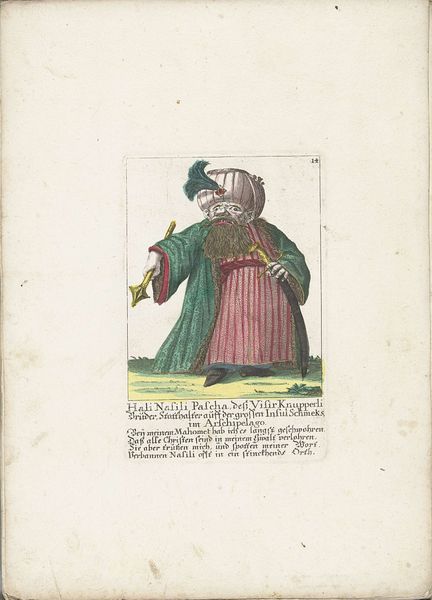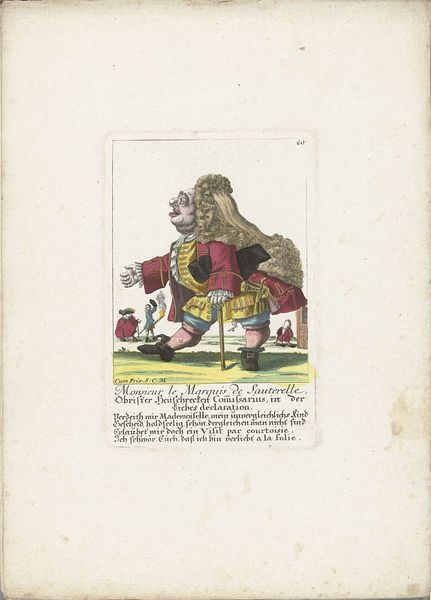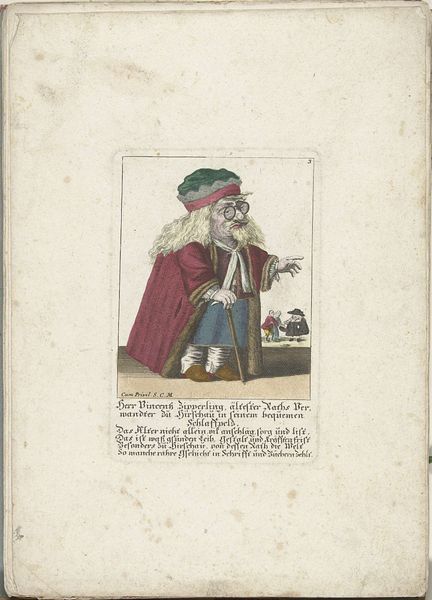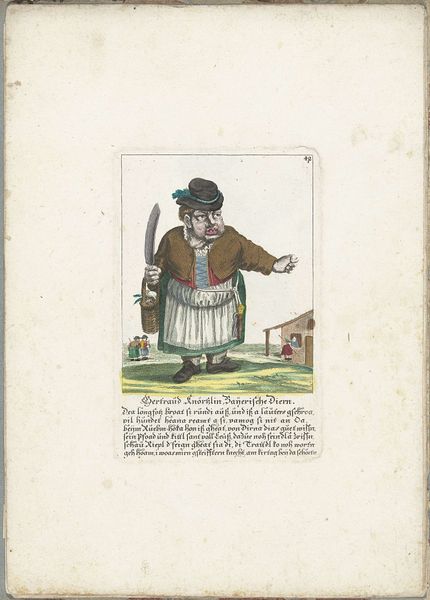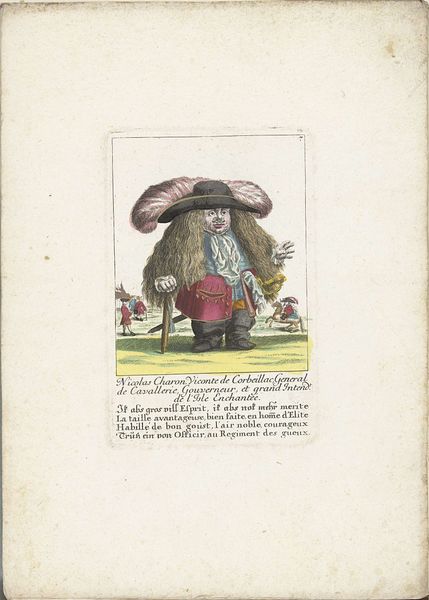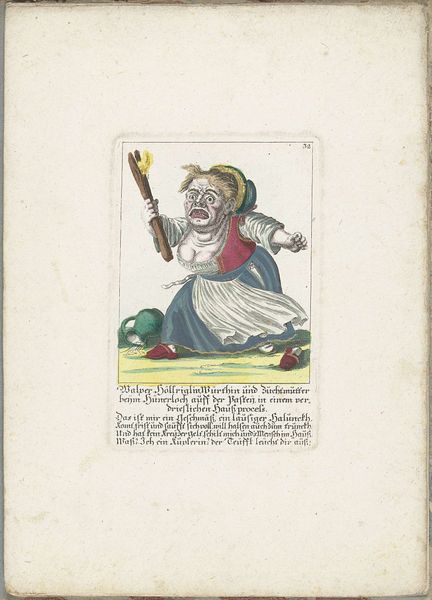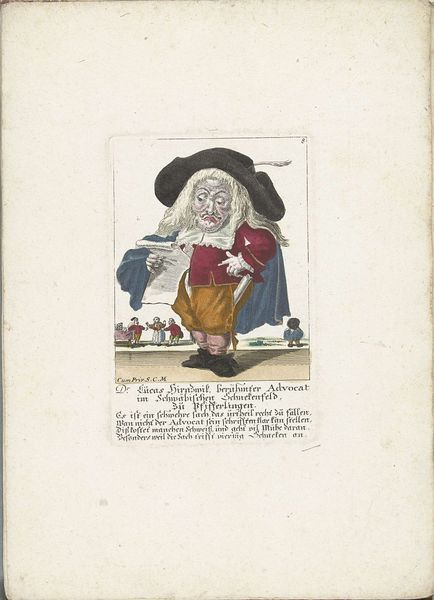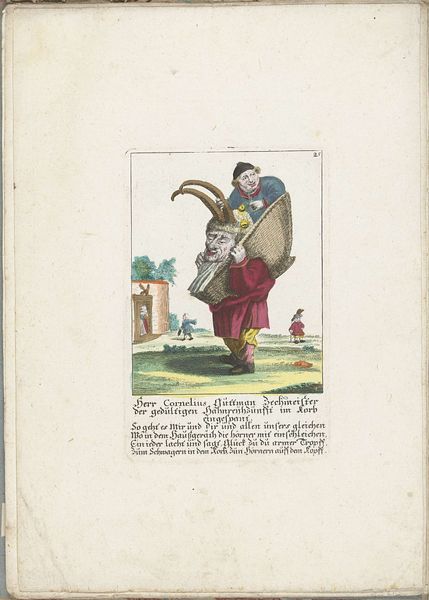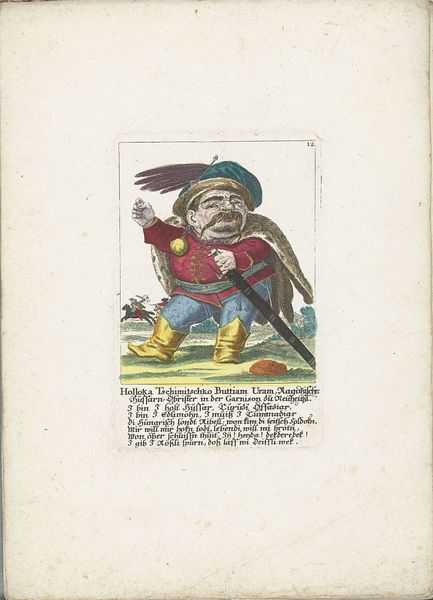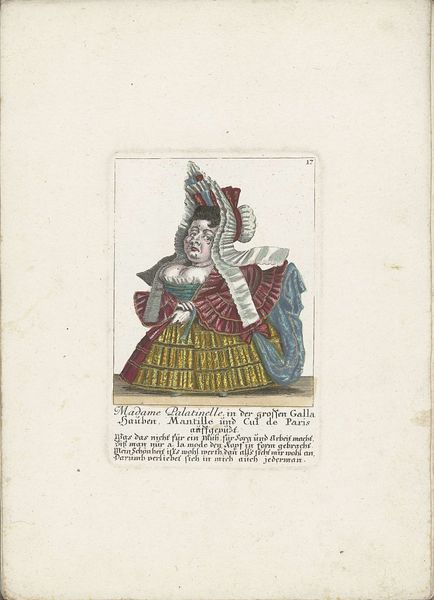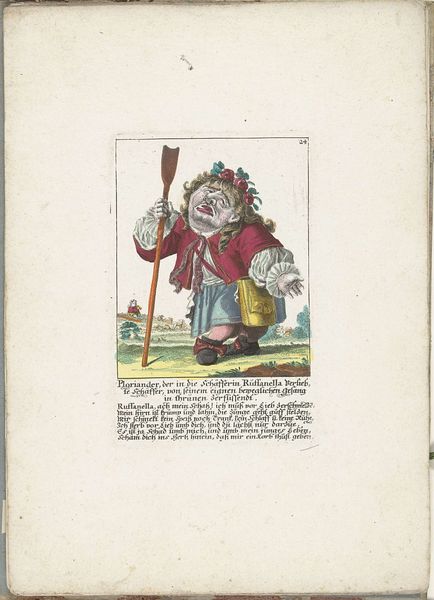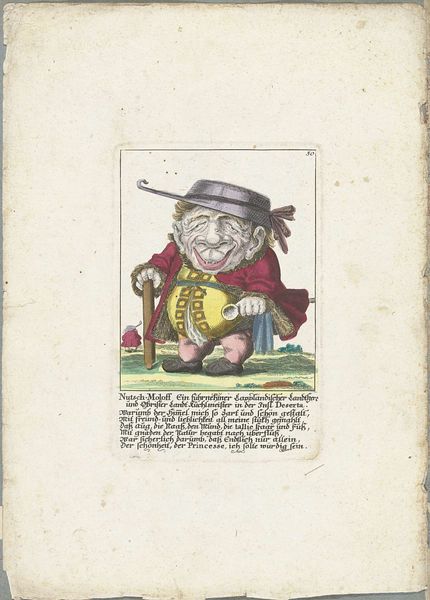
print, engraving
#
portrait
#
baroque
# print
#
caricature
#
figuration
#
engraving
Dimensions: height 170 mm, width 110 mm, height 320 mm, width 225 mm
Copyright: Rijks Museum: Open Domain
This engraving, made around 1710 by Martin Engelbrecht, portrays Robert von Parükenfeldt, notable for his large wig, itself a symbol of status and power during the Baroque era. Consider how the wig, almost comically oversized, connects to earlier representations of power, like the lion’s mane, signifying strength and authority. This exaggerated form speaks to a culture obsessed with outward appearances and social hierarchy, and this symbol becomes a marker of identity. We see echoes of this in other contexts, from royal portraiture to theatrical costume. This symbol undergoes a transformation, reflecting the shifting values and anxieties of each age. It is a fascinating example of how cultural symbols evolve. The wig, in its absurdity, engages the viewer, prompting questions about identity, status, and the human need for self-representation. Thus, the image of the wig carries with it the weight of history, reappearing in unexpected forms, a testament to the enduring power of symbols and the cyclical nature of cultural memory.
Comments
No comments
Be the first to comment and join the conversation on the ultimate creative platform.
